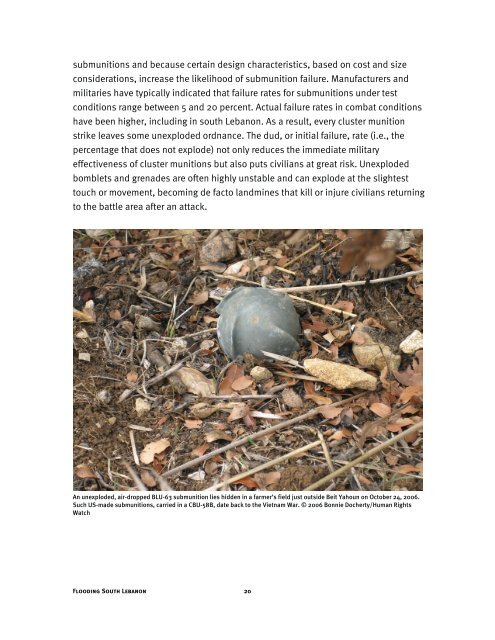Flooding South Lebanon - Human Rights Watch
Flooding South Lebanon - Human Rights Watch
Flooding South Lebanon - Human Rights Watch
Create successful ePaper yourself
Turn your PDF publications into a flip-book with our unique Google optimized e-Paper software.
submunitions and because certain design characteristics, based on cost and size<br />
considerations, increase the likelihood of submunition failure. Manufacturers and<br />
militaries have typically indicated that failure rates for submunitions under test<br />
conditions range between 5 and 20 percent. Actual failure rates in combat conditions<br />
have been higher, including in south <strong>Lebanon</strong>. As a result, every cluster munition<br />
strike leaves some unexploded ordnance. The dud, or initial failure, rate (i.e., the<br />
percentage that does not explode) not only reduces the immediate military<br />
effectiveness of cluster munitions but also puts civilians at great risk. Unexploded<br />
bomblets and grenades are often highly unstable and can explode at the slightest<br />
touch or movement, becoming de facto landmines that kill or injure civilians returning<br />
to the battle area after an attack.<br />
An unexploded, air-dropped BLU-63 submunition lies hidden in a farmer’s field just outside Beit Yahoun on October 24, 2006.<br />
Such US-made submunitions, carried in a CBU-58B, date back to the Vietnam War. © 2006 Bonnie Docherty/<strong>Human</strong> <strong>Rights</strong><br />
<strong>Watch</strong><br />
<strong>Flooding</strong> <strong>South</strong> <strong>Lebanon</strong> 20
















